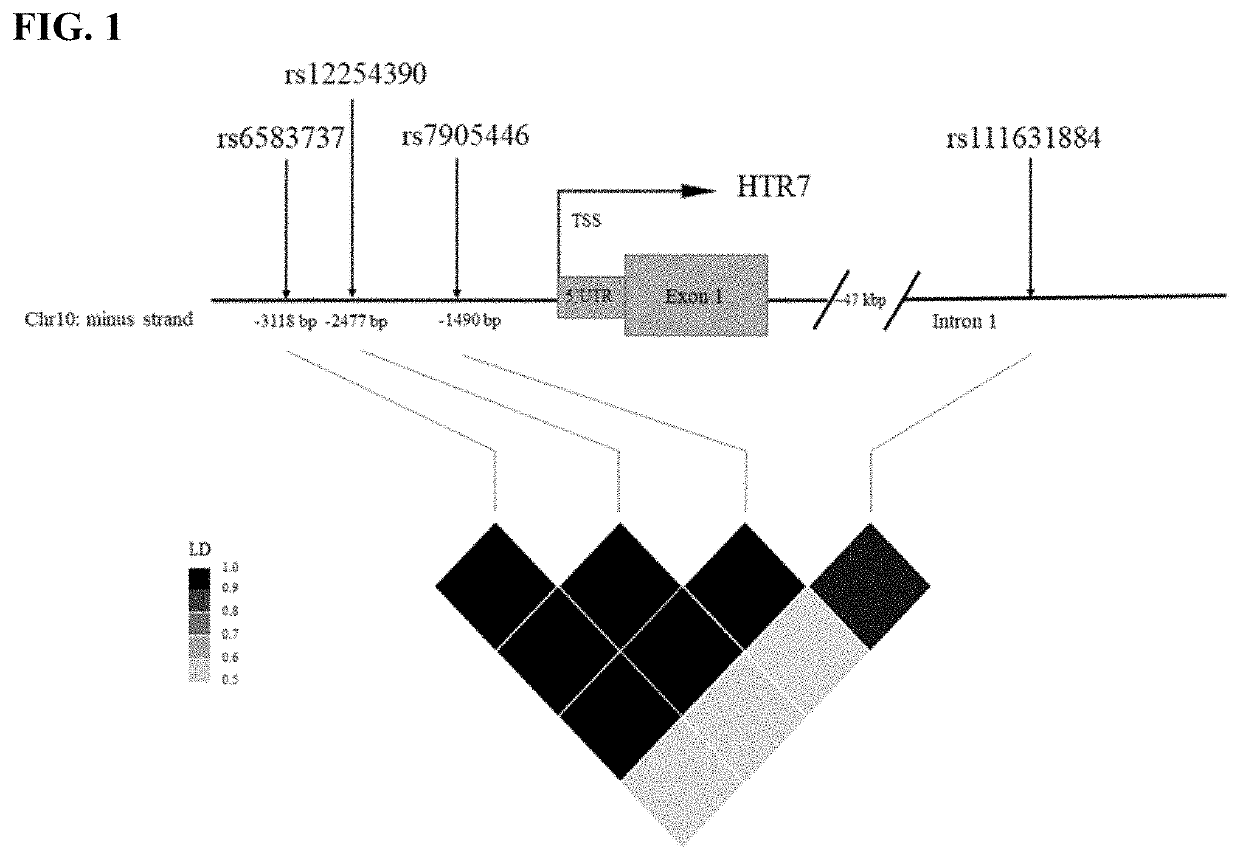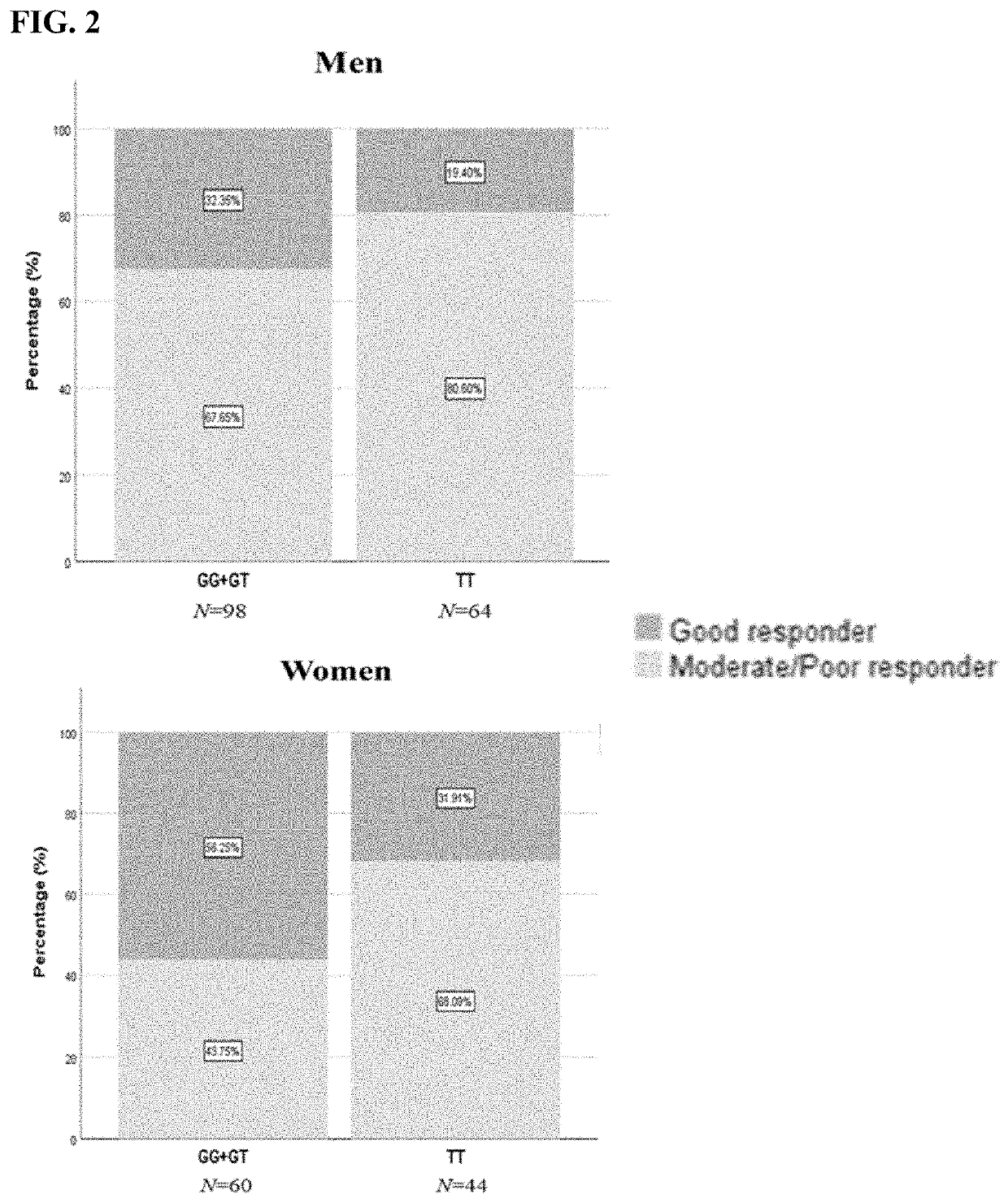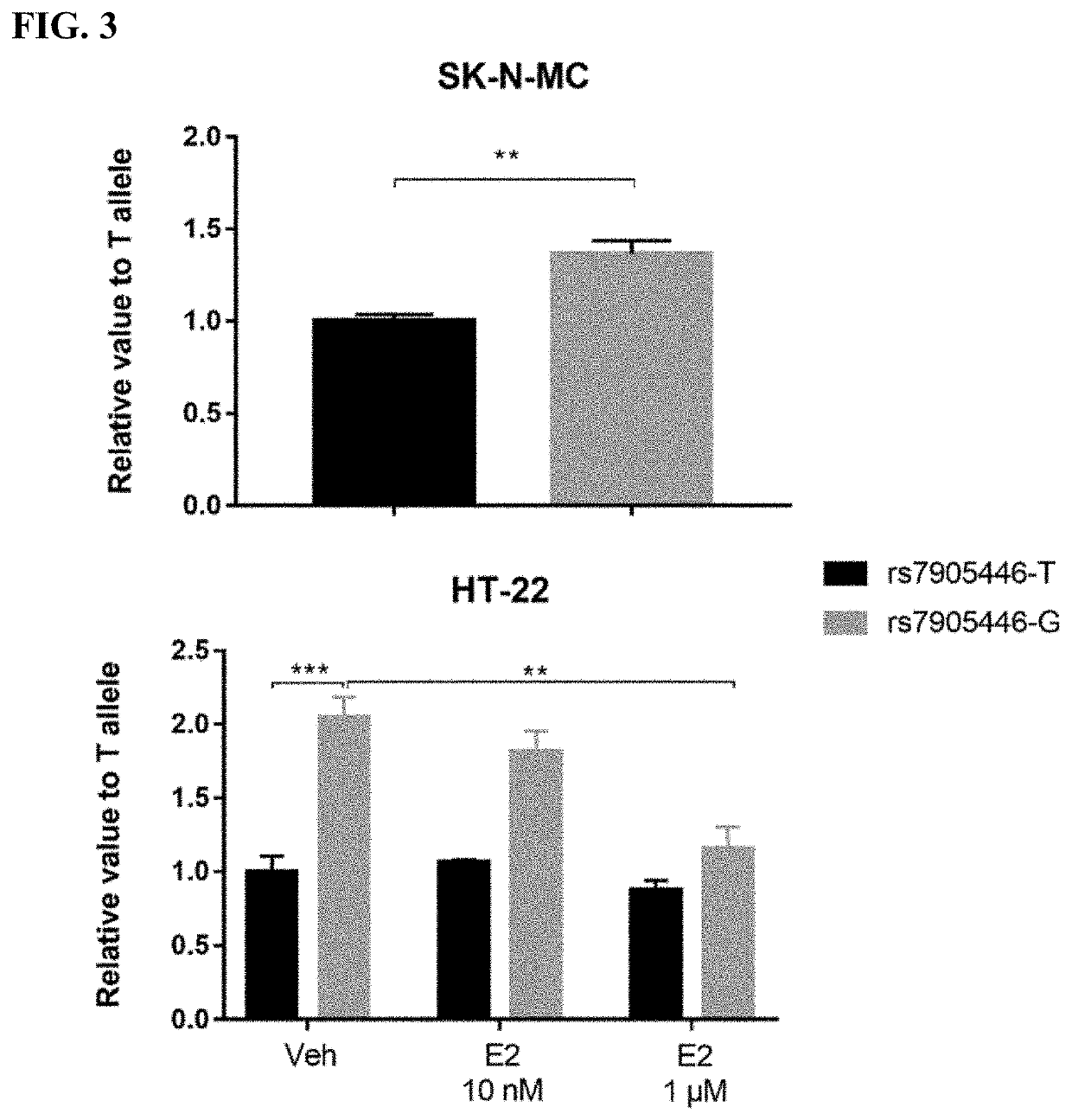Method to Predict Response to Neuropsychiatric Drugs Using Variation in the Serotonin 7 Receptor (HTR7) Gene
a serotonin 7 and gene variation technology, applied in the field of serotonin 7 receptor (htr7) gene variation, can solve the problems of limited studies of htr7 gene polymorphisms in clinical depression, inability to predict treatment outcome of those genetic polymorphisms, and significant clinical challenges in bipolar depression treatmen
- Summary
- Abstract
- Description
- Claims
- Application Information
AI Technical Summary
Benefits of technology
Problems solved by technology
Method used
Image
Examples
example 1
Materials and Methods
[0119]Pooled DNA sequencing. DNA was quantified with PicoGreen and equal quantities from each subject were combined into 48 pools (ranging from 11 to 24 subjects per pool) grouped by medication (citalopram, paroxetine, fluoxetine, sertraline and lithium) and type of response (good, moderate and poor). The entire HTR7 gene, promoter and 5′ and 3′ UTR regions were covered and amplified by 13 long range PCR, generating DNA fragments from 10 to 13 kb covering the region of Chr10: 92499978-92623668. We performed 2×150 bp paired-end, multiplexed sequencing on an Illumina MiSeq sequencer (Illumina, San Diego, Calif.). The quality of raw-reads were examined using FastQC [34] and were aligned to human reference genome (GRCh37 / hg19) using BWA [35]. We used CRISP (v0.7) [36] with the default setting as the variant caller and filtered the variants in the VCF files that showed EMpass, quality value >100 and minor allele frequency >0.05. The variants were annotated by ANNOVAR...
example 2
Pool-Sequencing of HTR7 Gene Identifies Common Variants Influencing Response to Antidepressants
[0124]We used a cost-effective pool-sequencing strategy to sequence the whole HTR7 gene and its regulator regions to investigate the association of common variations in HTR7 and response to four selective serotonin reuptake inhibitors (SSRIs, including citalopram, paroxetine, fluoxetine and sertraline) and lithium in a retrospective cohort mainly consisting of BD. We found 80 SNPs with FDR<0.05 associated with response to paroxetine. Among the significant SNPs, rs7905446 (T / G) which is located at the promoter region also showed nominal significance (p<0.05) in fluoxetine group. Taqman assay validated the sequencing result of rs7905446. Logistic regression demonstrated rs7905446 GG / TG genotypes and female gender were associated with better response to two SSRIs (paroxetine and fluoxetine). In the second stage, we investigated if rs7905446 could predict antidepressant response in two prospec...
embodiments
Embodiment 1
[0196]A method of determining whether a neuroactive drug is suitable for treating a subject undergoing treatment for a neuropsychiatric disorder comprising determining a rs7905446 single nucleotide polymorphism (SNP) in the subject, wherein the presence of a TT genotype indicates that a selective serotonin reuptake inhibitor (SSRI) or noradrenergic reuptake inhibitor (NARI) is unsuitable for treating the subject; and, wherein the presence of a GG or GT genotype indicates that a SSRI or noradrenergic reuptake inhibitor (NARI) is suitable for treating the subject.
PUM
| Property | Measurement | Unit |
|---|---|---|
| Disorder | aaaaa | aaaaa |
Abstract
Description
Claims
Application Information
 Login to View More
Login to View More - R&D
- Intellectual Property
- Life Sciences
- Materials
- Tech Scout
- Unparalleled Data Quality
- Higher Quality Content
- 60% Fewer Hallucinations
Browse by: Latest US Patents, China's latest patents, Technical Efficacy Thesaurus, Application Domain, Technology Topic, Popular Technical Reports.
© 2025 PatSnap. All rights reserved.Legal|Privacy policy|Modern Slavery Act Transparency Statement|Sitemap|About US| Contact US: help@patsnap.com



